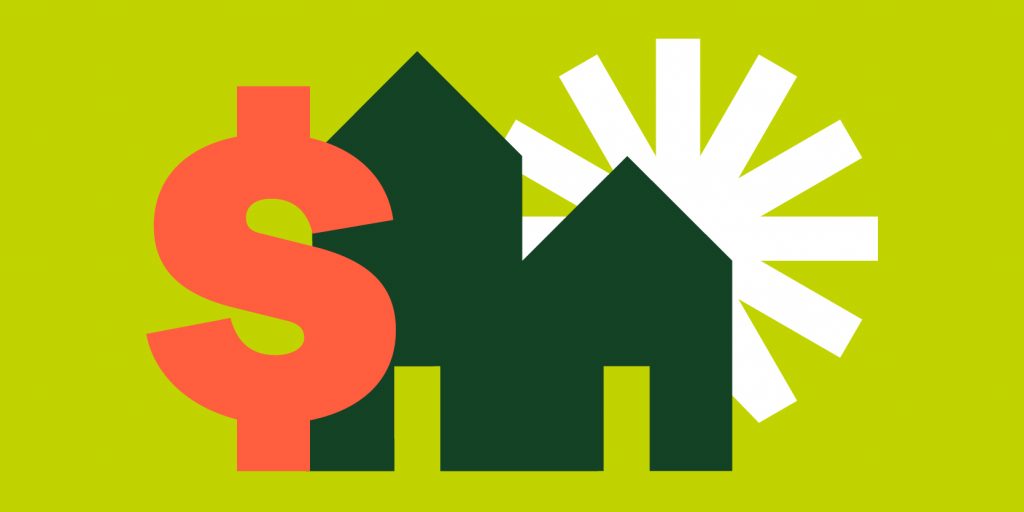Curious about rent to own homes? Whether your dream home happens to be available that way, or a mortgage isn’t the best fit for you right now, rent to own homes can be a great way to step into home ownership in a non-traditional way. Here’s what rent to own homes are, and how they work.
What are rent to own homes?
Rent to own homes are those with leases that include either an option to buy or a requirement to buy after a certain period of time. The rental payments include both rent and funds that contribute to a future down payment. It can help you build up your credit score and save for a down payment on the property all at once.
How do you find a rent to own home?
Rent to own home listings aren’t as common as either rental or sale listings, because they often happen under very specific circumstances, such as:
- When a property owner has had a home on the market for a while, but is having trouble selling it, they may list it as a rental with an option to rent to own.
- If a tenant is happy in their rental home, but the landlord wants to sell it, the tenant may ask to have a rent to own arrangement.
- If a home buyer sees that a home has been on the market for a long time, they may approach the seller with a rent to own offer.
If a rent to own home sounds like a good option for you, you can either look for rental listings that include this option or longstanding sale listings that don’t seem to be going anywhere. Or you can ask your landlord if they’re open to discussing a change in your relationship with a rent to own agreement.
How does rent to own work?
-
1. You sign one of two types of agreements.
There are two types of legal agreements to choose from with rent to own homes.
- A lease agreement with option to purchase This contract gives you the right—but not the obligation—to buy the home at the end of your lease. If you decide not to go through with the purchase, the option expires, and you can walk away. But you will lose the money that you paid over and above the rent.
- Lease agreement with purchase agreement With this type of agreement, you could be legally obligated to buy the home at the end of the lease. With this type of contract, you’ll want to be extra sure to have a home inspection done to make sure there are no sure no surprise expenses come up once you become the owner. You may also want to get pre-approved for a mortgage to be sure you’ll qualify for one when you need to.
-
2. You and the landlord set a purchase price.
The home’s purchase price will be set up front. You’ll negotiate with the landlord on the price. Traditionally, home buyers rely on real estate agents to help negotiate home prices, but agents are rarely involved with transactions for rent to own homes. That’s because there’s little to no way for them to get paid until the home actually sells, which is often years in the future. Without an agent, it’s smart to do research on comparable home sales before talking about prices with the landlord.
Get a general idea of your local housing market with current housing prices. If you search your target city or neighborhood in Trulia, you’ll find a few indications of current local prices that can help you decide when to buy a house:
- On each home listing, you’ll find the price of that house, as well as home estimates for neighboring houses.
- In many neighborhoods, you can find the typical price ranges of homes, as well as other helpful info.
- Check out the Price Trends info on every Trulia listing to see the average price of new and resale home based on current data.
You may also want to get an inspection done at this time, to make sure there aren’t expensive issues that will need to be addressed after you become the homeowner.
-
3. You pay an option fee.
You’ll also pay an “option fee” when renting a rent to own home. This is also negotiable, but is usually about 1% (but can be as high as 5%) of the purchase price—up front. It is a one-time, non-refundable fee that gives you the option to buy the home at an agreed upon price in the future. The option fee will be applied to the home purchase.
-
4. You decide how long the rental term will be.
At the end of the rental portion of your contact, your goal will be to be in a good financial purchase the home. The rental agreement typically lasts one to three years. How long you want yours to be will depend on how long you think you need to get your finances ready to qualify for a mortgage.
-
5. Maintenance roles will be defined.
When your landlord owns the house, but you plan to buy the house, you both have reasons to want to keep the property in good shape—or you both may feel the other person should be obligated to do it. Because rent to own homes are unique situations, maintenance and repair obligations should be clearly laid out in your lease agreement.
-
6. Your monthly payment covers rent and down payment savings.
To get into a rent to own home, you sign a rental agreement and also a document that outlines how you plan to purchase the house. The amount you pay can be negotiated, but you generally agree to pay something that’s above market rent. That extra portion—typically 25% to 30% of the monthly payment—goes toward the eventual property purchase. Think of it as a way to save for a down payment. Of course, you can always save more on your own, too.
-
7. When the rental term nears its end, you apply for a mortgage.
When it’s time for you to purchase your home, you’ll apply for a mortgage just like any other home buyer. Shop around for the best mortgage lender and mortgage type for you and apply. With any luck, you’ll be on your way to homeownership.
Whether you’re in a regular rental or a rent to own home, keeping your eye on your finances is smart. Here’s our budgeting guide for renters.



